Hollywood and the Nazis
The apprehensiveness of American Jews has become one of the important influences in the social life of our time.” This unsettling observation comes from the opening paragraph of a strange little book written in 1936 by “The Editors of Fortune,” entitled Jews in America. Fortune was then in its early heyday, featuring the photography of Margaret Bourke-White and Walker Evans and the elegant prose of Archibald MacLeish. Its founder, Henry Luce, once remarked that it was, “easier to turn poets into business journalists than to turn bookkeepers into writers,” and his investment paid off: During his nine years at Fortune, MacLeish published four books of poetry, won a Pulitzer Prize, and wrote nearly a hundred articles, including the one on which Jews in America was based. The ascent of Mussolini and Hitler and the anguish of the Great Depression had given rise to homegrown fascism and anti-Semitism in the United States. Friends of the New Germany, a pro-Nazi forerunner of the German American Bund, launched its operations in 1933, as did the Silver Shirts, a domestic version of Hitler’s Brownshirts, founded by William Dudley Pelley, a Christian occultist and former Hollywood screenwriter. The phenomenon, wrote MacLeish, “is important to non-Jews as well as to Jews,” because a nation that, “permits a minority to live in fear of persecution is a nation which invites disaster.”
[A]ny man who loathes Fascism will fear anti-Semitism . . . He will be troubled by the fact that certain Jews carry their race like an Irishman’s fighting shillelagh while others resent, as though it were a deliberate insult, any reference to their blood, avoiding friends who speak of it, boycotting publications which publish it in print. He will wonder whether such an attitude is necessary.
In 1935, Sinclair Lewis had published his novel It Can’t Happen Here, warning that “it”—fascism—indeed could. Now Fortune, wary that anti-Semitism might destabilize American society, was determined to prove that it was both unwarranted and toothless. The Klu Klux Klan and Henry Ford had flourished in the 1920s, wrote MacLeish, but those days were gone: “Geographically the concentration of the movement in Southern California, the established breeding ground of cranks and crankeries, serves to characterize it very well.” Also concentrated in Southern California, then as now, was the movie business. Two new books, by Thomas Doherty of Brandeis and Ben Urwand of Harvard, take strikingly different approaches to the story of how Hollywood moguls and producers, most of them Jewish, dealt with Nazi Germany during the 1930s. Doherty offers a panoramic picture that includes the compromises made by studio bosses to safeguard their income in shaky times. Urwand’s book is a veritable “J’accuse,” claiming that the moguls collaborated outright with the Nazis. Doherty’s book was quietly greeted with respectable notices; Urwand’s invited and garnered great publicity, and his argument was swiftly attacked by reviewers.
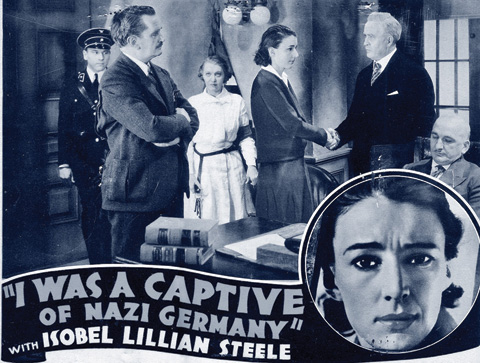
What was it really like in the 1930s? Before Fortune went to press in the winter of 1936, MacLeish sent his article to a number of Jewish notables, including his former Harvard Law professor Felix Frankfurter, and reported to Luce that all the Jews who read it felt, “the piece was valuable and should bring offense to no one.” One wonders. Consider this startling passage, early in the text:
The outstanding fact about the Jewish people is the fact that they have preserved, though scattered among the nations of the earth, their national identity. They are unique . . . not because they have bold noses—only a small percentage of Jews have the Jewish nose—but because they alone, of all peoples known to history, have retained in exile . . . their distinction from the peoples among whom they live. The Jew is everywhere and everywhere the Jew is strange.
Fortune went on to marshal facts and figures to prove that Jews did not “dominate the American scene” nor were they “monopolizing economic opportunity.” With regard to the movies, however, anti-Semites might make “a persuasive case.” According to Appendix B of Jews in America, three of the eight major film companies—Warner Brothers, Loew’s (which owned MGM), and Columbia—were fully “controlled” by Jews, and three were partly in Jewish hands. The latter category included United Artists, among whose principals was Charlie Chaplin, “claimed as a Jew by other Jews.” (Chaplin was not, in fact, Jewish, but refused, on principle, to deny it publicly.) Most importantly, of “eighty-five names engaged in production”—executives, producers, and associate producers—“fifty-three are Jews.”
Nonetheless, “the Jews do not come within a gunshot of running America,” and “their numbers are no longer rapidly increasing.” This oddly phrased pronouncement—alluding favorably to the immigration restrictions of the 1920s—was meant to assuage nervous Jews as well as Gentiles. But if Louis B. Mayer, Jack Warner, or Sam Goldwyn had read the book, they might have thought otherwise.
Thomas Doherty, a professor of film and American studies, is the author of a book on the Production CodeAdministration (PCA), which he calls “Hollywood’s in-house moral police force.” The PCA, established in 1930 by the Hays Office, the industry’s trade association, was not seriously enforced until 1934, when Joseph Breen, a conservative Catholic layman, took charge. In addition to its stern moral guidelines regarding sex and profanity, the PCA also stipulated that, “The history, institutions, prominent people, and citizenry of all nations shall be represented fairly.” Doherty writes:
As interpreted by Breen and [Will] Hays, the vague injunction codified a see-no-evil, speak-no-evil, hear-no-evil policy toward any regime on the planet, especially if the nation in question offered a lucrative market for Hollywood imports . . . On the Hollywood screen, Germany was not to be slighted, the Nazis were not to be criticized, and Hitler was not to be mentioned.
His aim in the new book, Doherty says, is to “sharpen the focus on a blurry chapter in motion picture history—when Hollywood, in the grip of the Great Depression, first mediated Nazism as a business, an ideology, and, finally, a threat.” To do so, he has analyzed films of the period, trolled the “witty reportage” from Variety, the Hollywood Reporter, and other trade papers, and examined studio archives and the files of the Hays Office and PCA. “I wanted to recapture what was seen on screen at the time and to gauge how Americans, filmmakers and moviegoers alike, responded,” Doherty writes, “[t]hinking it best not to overlay what we know now onto what they knew then.”
Doherty’s book, with its plain-spoken title, Hollywood and Hitler, 1933–1939, came out in early 2013, a few months before the publication of Urwand’s attention-grabbing The Collaboration: Hollywood’s Pact with Hitler. This enabled Urwand to mention it once, in an endnote (“a lively account, but one that is limited to reports that appeared in American trade papers”), and his publicists to dismiss it as flawed and superficial in a press release. Doherty struck back in The Hollywood Reporter:
I consider Urwand’s charges slanderous and ahistorical—slanderous because they smear an industry that struggled to alert America to the menace brewing in Germany and ahistorical because they read the past through the eyes of the present . . . “I never knock the other fellow’s merchandise,” says insurance agent Walter Neff in Billy Wilder’s Double Indemnity . . . [yet] I am always leery of history that encourages the present to feel morally superior to the past.
The brouhaha has stirred considerable attention, including a carefully balanced account in The Chronicle of Higher Education and a critique of Urwand’s “extreme conclusions” by New Yorker film critic David Denby, who expanded his assault in a blog entitled “How Could Harvard Have Published Ben Urwand’s The Collaboration?”
On the back flap of his book, Urwand is identified simply as “a Junior Fellow of the Society of Fellows at Harvard University.” Less understated, however, is his website, filled with laudatory press clips and TV interviews in which the author recounts the extraordinary revelations of the book that took him nine years to write, digging into German archives where no scholars of Hollywood had dug before. It also tells us that he was the lead singer and songwriter for a rock band in San Francisco.
The Collaboration, based on the author’s PhD thesis at UC Berkeley, is a pairing of scholarship and showmanship. In his prologue, Urwand trumpets his achievement:
This book reveals for the first time the complex web of interactions between the American studios and the German government in the 1930s. It unearths a series of secret documents . . . The studio heads, who were mostly immigrant Jews . . . followed the instructions of the German consul in Los Angeles . . . It is time to remove the layers that have hidden the collaboration for so long . . .
“Over the course of the investigation,” Urwand writes, “one word kept reappearing in both the German and American records: ‘collaboration’ (Zusammenarbeit).” The word does mean “collaboration”—but also “cooperation,” or, literally, working together. Only once does the English word appear in a primary source quoted by Urwand. Of the eight times it appears in German sources, five are from the same place, a report by one Dr. Martin Freudenthal, a “special agent” of the German Foreign Office who was sent to Hollywood in January 1932, before the Nazis took power. Freudenthal spent a year in Los Angeles, and when he got home he told his new Nazi bosses that Hollywood folks he met (at Universal, RKO, Fox, and United Artists) were prepared to work in Zusammenarbeit with German officials. “‘Every time that this collaboration was achieved,’ Freudenthal said, ‘the parties found it to be both helpful and pleasant.’”
Is this as ominous as Urwand would have it, or a simple description of cooperation between friendly nations? After all, as he acknowledges, other countries, including Canada and China, had also sent representatives to Hollywood “to ensure that their cultures were portrayed accurately.” Doherty, with ironic flair, writes that, “censoring cinema was a multinational pastime”: “The British flinched at cruelty to animals, the French bristled at the slightest slight to Gallic honor,” and so on.
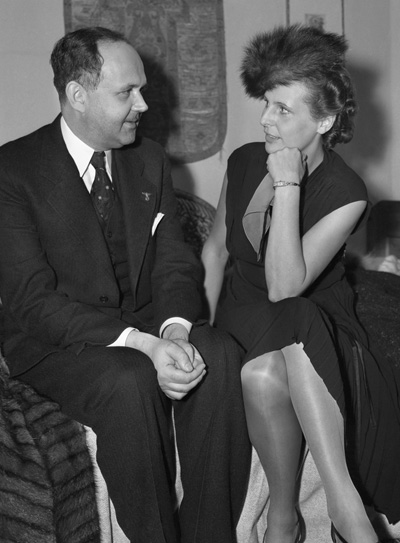
Freudenthal proposed that Germany attach a permanent representative to its consulate in California, to see to the “education and training” of the studios about German interests. He may have wanted that cozy job for himself, as Urwand plausibly surmises, but instead the Germans installed a Nazi diplomat named Dr. Georg Gyssling, who plays the heavy in Urwand’s drama. His principal weapon bore the sinister label “Article Fifteen,” a proviso enacted in 1932 by which Germany could boycott studios and producers who made films “detrimental to German prestige.”
Urwand’s investigation was sparked by “a brief comment that the screenwriter and novelist Budd Schulberg made very late in his life.” Schulberg was interviewed in a 2002 documentary about Chaplin’s The Great Dictator, in which he claimed that Louis B. Mayer was in cahoots with Gyssling:
When they tried to make some, I think there was Three Comrades, there were some films that Louis B. Mayer of MGM would actually run those films with the Nazi German consul and was willing to take out the things that the consul, that the Nazis, objected to . . . I heard about the way that Louis Mayer would kowtow . . . he was definitely doing it. I think the consul even came to the studio and looked at his pictures and said yes, that’s all right, no take that out, it was unbelievable.
In an endnote, Urwand says he “attempted to contact” Schulberg in 2004 (he died in 2009). Had he succeeded, he might have asked him why he had never dropped this bombshell before. Schulberg is best known for his blistering 1941 Hollywood novel, What Makes Sammy Run? In another note, Urwand mentions that Schulberg told Newsday in 1987 that when the novel came out, “Louis B. Mayer told his father, B.P. Schulberg (a former executive at Paramount), ‘You know what we should do with him? We should deport him!’” As the film blogger known as “Self-Styled Siren” commented in her evisceration of Urwand’s book: “There may have been a certain amount of lingering pique on the part of Schulberg fils.” It is reasonable to wonder whether Schulberg’s vague memory (“I think,” “I heard”), more than six decades later, was accurate. Nowhere in the book is there further evidence that Mayer and Gyssling met, on that occasion or ever.
The story in brief: Hollywood censor Joseph Breen had received three letters from Gyssling, expressing concern about MGM’s plan to film Three Comrades, a novel by Erich Maria Remarque, set in Germany after World War I. In May 1937, MGM sent a draft of the script to Breen, who, says Urwand, “could not find anything wrong with it,” apart from some “coarse language and drinking.” F. Scott Fitzgerald was brought in to do a rewrite, and his version “mounted a powerful attack on the rise of Nazism in Germany.” Producer Joseph Mankiewicz ordered further rewrites, in which “the jabs at the Nazis” remained. When Breen read the new script, says Urwand, “he panicked,” having received a “fourth warning” from Gyssling, and Breen wrote to Mayer, worrying that the film would lead to “enormous difficulty” in Europe. At this point, Urwand inserts the Schulberg recollection he had described in the prologue. Soon thereafter, he tells us, Breen was “in possession of a list of changes that needed to be made to the film.”
It is very unlikely that Breen came up with the list himself, for he had his own set of suggestions (relating to sex, foul language, etc.). In all likelihood this secret document, which contained ten unusual changes, was the list that Mayer compiled with Gyssling at the end of their screening of Three Comrades.
After the changes were made, Urwand writes, “Three Comrades neither attacked the Nazis nor mentioned the Jews. The picture had been completely sanitized” and “Georg Gyssling was invited to preview it again.” Gyssling suggested a few small changes, and they were made. In short, declares Urwand, “the director did not have the final cut; the Nazis did.”
I rehearse this episode because it illustrates Urwand’s impulse to turn speculation (“in all likelihood”) into shocking revelation. Doherty devotes little attention to Three Comrades, basing his thin version on an article in Time magazine, which reported that Breen had ordered cuts to the film. Joseph Mankiewicz, the producer, said Time, had denied this and claimed that MGM had decided on its own “to delete all sequences which were extraneous to the love story of the film,” and that neither Breen nor Gyssling had any role in that decision. Doherty takes Mankiewicz at face value. Digging deeper than Doherty, Urwand unearths fascinating stuff. His research undercuts Mankiewicz’s credibility, even as his inflated rhetoric undermines his own.
In Doherty’s book, it was Breen and the Hays Office who were allergic to “politically sensitive pictures.” Sometimes they listened to Gyssling’s complaints and took them into account, and sometimes not. It was Breen, says Doherty, who in 1936 squashed MGM’s plan to film Sinclair Lewis’ It Can’t Happen Here. Urwand tells it differently. Breen and Hays, he says, batted the matter between them, while Louis B. Mayer held his ground. Then a Reform rabbi from Philadelphia named William H. Fineshriber wrote Will Hays that it was a bad idea: “The only wise method to pursue in these days of virulent anti-Semitism is to have no picture in which the Jewish Problem is ventilated.” Hays met with Mayer, who dropped the project.
Urwand allows that Mayer’s decision was “shrouded in mystery,” adding that “there is no evidence to suggest that Gyssling issued any complaint about It Can’t Happen Here.” But Urwand, his eye on the prize, won’t let it go at that:
Whether Gyssling was involved in the cancellation of It Can’t Happen Here will probably never be known. But even if Gyssling were not directly involved, his presence in Los Angeles undoubtedly affected MGM’s decision. Ever since 1933, he had been putting his energies into “educating and training” the Hollywood studios about German national feeling. He had created the system of collaboration that made his position on any potential anti-fascist film obvious . . . Gyssling did not need to open his mouth to have It Can’t Happen Here abandoned.
In response to his critics, Urwand has repeatedly insisted that he has stuck to the facts. “Any claims I make are based on archival materials,” he told the BBC. “Everything in my book is documented.” That claim, too, is debatable, not least because the references to primary sources are often cryptic. By omitting translated titles of German materials, Urwand thickens his atmosphere of “secret documents” and “hidden layers” of collaboration.
Doherty describes the industry’s response to early manifestations of Nazi terror as one of “befuddlement.” The studio heads kept betting on regime change: “Surely, the fever would eventually break.” Urwand, however, writes as if the moguls—mostly Jews!—were enablers of the Holocaust. In so doing, he is guilty of what the late literary scholar Michael André Bernstein called “backshadowing”: “a kind of retroactive foreshadowing in which the shared knowledge of the outcome of a series of events by narrator and listener is used to judge the participants in those events as though they too should have known what was to come.” To put it more plainly, he’s a Monday-morning quarterback.
Notwithstanding the avalanche of reviews and polemics, both Doherty and Urwand’s books are worth reading. Doherty is the better writer, whereas Urwand provides narrative suspense: What conclusion will he jump to next? He is ever on the lookout for the “gotcha!” moment: One letter from a nameless German employee of Fox written in 1938 to a Nazi official was signed “Heil Hitler!” The three-week tour of Europe in the post-victory summer of 1945 organized by the U.S. Army for movie executives was capped by a six-hour cruise up the Rhine “in Hitler’s personal yacht.” This makes for a good sound bite, but what does it prove?
Doherty too tells his share of damning tales, but his book is more balanced. He spends a chapter on the extensive activism of the Hollywood Anti-Nazi League (HANL). Led by a pair of screenwriters, the urbane Donald Ogden Stewart and the famously witty (and half-Jewish) Dorothy Parker, HANL was part of the Popular Front, a broad coalition that included New Deal Democrats as well as communists. “[T]he motion picture industry,” Doherty writes, “was no worse than the rest of American culture in its failure of nerve and imagination, and often a good deal better in the exercise of both.” For Urwand, Hollywood is the place where, in 1939, MGM—at consul Gyssling’s request—hosted a studio tour for a delegation of Nazi newspaper editors. HANL protested the episode, earning the group its sole brief mention in Urwand’s book.
Doherty also dwells on a mediocre non-studio 1936 movie called I Was a Captive of Nazi Germany, based on a true story, “the only anti-Nazi feature film produced in America and granted a Code seal before 1939.” Its producer, Alfred T. Mannon, defied Georg Gyssling’s attempt to block the film in a letter to Breen that detailed Nazi abuses. For Urwand, it’s a curiosity, a bump in the conspiratorial narrative: He relegates it to a long endnote.
Urwand is more interested in a film that didn’t get made, called The Mad Dog of Europe. In Doherty’s version, the “long-gestating, never-realized scenario caught in a 1930s version of development hell”—industry jargon for endless rewrites—“illustrates the Hollywood aversion to anti-Nazi cinema in the 1930s.” This was also an independent production, first scheduled for 1933. Breen opposed it on political grounds, explaining that the Jewish producers of “an anti-Hitler picture” would be accused of “using the entertainment screen for their own personal propaganda purposes,” and the project “might result in a boomerang.” Urwand’s account features the elusive Gyssling (who may or may not have gotten involved at first: “the evidence is inconclusive—but he probably did”) along with the Anti-Defamation League, which actually echoed Breen’s concerns. “The decision not to make The Mad Dog of Europe,” Urwand declares, “was the most important moment in all of Hollywood’s dealings with Nazi Germany.” The studios now “had a perfect justification for not making movies about the Nazis . . . [T]hey could now cite a more high-minded aim” than commercial interests. Urwand insists, implausibly in my view, that this was only an alibi: “There is no evidence, at this point or later on, that they were actually afraid of the potential anti-Semitic reaction.”
In 1940, MGM—“the studio most deeply immersed in trafficking with the Nazis during the 1930s,” as Doherty rightly notes—released The Mortal Storm, a melodrama that for Urwand “was without any doubt the first truly significant anti-Nazi film.” All references to Jews had been cut from the film, yet Breen and Gyssling had nothing to do with it. Why? The standard explanation, advanced by students of Jewish Hollywood for half a century, is Jewish anxiety. As Henry Popkin wrote in a seminal Commentary essay from 1952:
There has grown up an unwritten law that makes the Jew the little man who isn’t there. This law originates not in hate, but in a misguided benevolence—or fear; its name is “sha-sha.” At its most effective, the taboo banishes all Jewish characters, all Jewish names, the word “Jew” itself. If we pretend that the Jew does not exist, the reasoning goes, then he will not be noticed; the anti-Semite, unable to find his victim, will simply forget about him.
Thirty years ago, when I worked in Hollywood, the Jewish taboo had not yet expired. When I pitched scripts with Jewish content, I was rebuffed by studio executives with two blunt words: “too Jewish.” Urwand will have none of this:
Back in 1933, in an effort to hold onto the German market, Louis B. Mayer had agreed not to make The Mad Dog of Europe . . . From that moment onward, the various studio heads, in compliance with the wishes of Georg Gyssling, made sure neither to attack the Nazis nor to defend the Jews in their films . . . Their timidity, in other words, was not inherent; it derived from their years of collaboration with Nazi Germany.
For Urwand, it boils down to Zusammenarbeit, not anxiety: All else is commentary. Doherty, as quoted in The Chronicle of Higher Education, summarizes his own position: “Louis B. Mayer was a greedhead, but he is not the moral equivalent of Vidkun Quisling.”
One figure who plays a small supporting role in Urwand’s narrative is a former ADL official named Leon Lewis, who founded a committee of executives from major studios who met monthly “for the sole purpose of discussing Jewish matters.” What Urwand apparently didn’t know was that Lewis was also running a local network of anti-Nazi spies in Los Angeles funded by these very same studio bosses, as Laura Rosenzweig details elsewhere in this issue. (See “Hollywood’s Anti-Nazi Spies” on page 5.)
One can’t help wondering how Urwand’s book would have turned out had he known about this story. Would he have rebranded his book, or at least toned it down? He might as easily have argued that the moguls managed to have it both ways: Play ball with Hitler to save their shirts, go to anti-fascist cocktail parties, and pony up for a cloak-and-dagger adventure that suited their temperaments even as it salved their Jewish conscience.
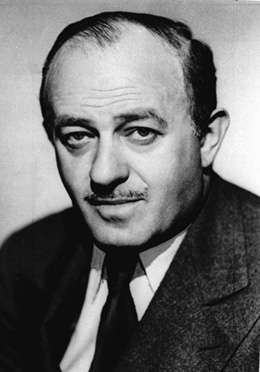
Doherty’s penultimate chapter, “The Only Studio with Any Guts,” is about the brothers Harry and Jack Warner, who “sold anti-Nazism as twentieth-century Americanism,” and in 1939 made Confessions of a Nazi Spy, based on a true story about a domestic spy ring busted by the FBI. Urwand dismisses that same film as an “obvious B-picture.” His Jewish hero is not a mogul but a writer, the hugely prolific screenwriter and journalist Ben Hecht, who famously teamed up with Irgun militants who had come from Palestine to the States to raise money for a Jewish army and other purposes.
In his autobiography, A Child of the Century, Hecht wove a theatrical tale of his conversion to Jewish activism. Urwand describes Hecht’s impassioned campaign to “bring the genocide to national attention” by means of ferocious newspaper ads and a dramatic pageant of 1943 called We Will Never Die. Urwand mistakenly reports that the pageant featured “the then unknown Marlon Brando”; that came later, in 1946, when Brando played a young Holocaust survivor in Hecht’s A Flag Is Born, a Broadway play in support of a Jewish State. But Urwand chooses not to deal with Hecht’s postwar Zionist phase, when he raised money for the Irgun (while writing Notorious for Alfred Hitchcock).
He ends his discussion of Hecht in 1945: “At a time when most American Jews were afraid to rock the boat . . . Ben Hecht’s voice was the loudest, most courageous Jewish voice in America.” Reading Ben Urwand on Ben Hecht, one realizes how closely he identifies with him. The zenith of Hecht’s radicalization was the publication in 1961 of his book Perfidy, in which he accused Ben-Gurion’s Labor Zionists of collaboration with Hitler, and the Haganah of
collaboration with the British. Urwand makes no mention of that heavily footnoted, widely discredited book, but nonetheless seems to be under its enduring spell. The Collaboration is his Perfidy.
Suggested Reading

A Torah Exchange: Malka Simkovich Responds to Yonatan Adler
Malka Simkovich engages with Yonatan Adler's letter.

Black September
Organizers of the 1972 Olympic games were determined to avoid recalling Munich's Nazi past—which inadvertently facilitated the bloody massacre of Israeli athletes.
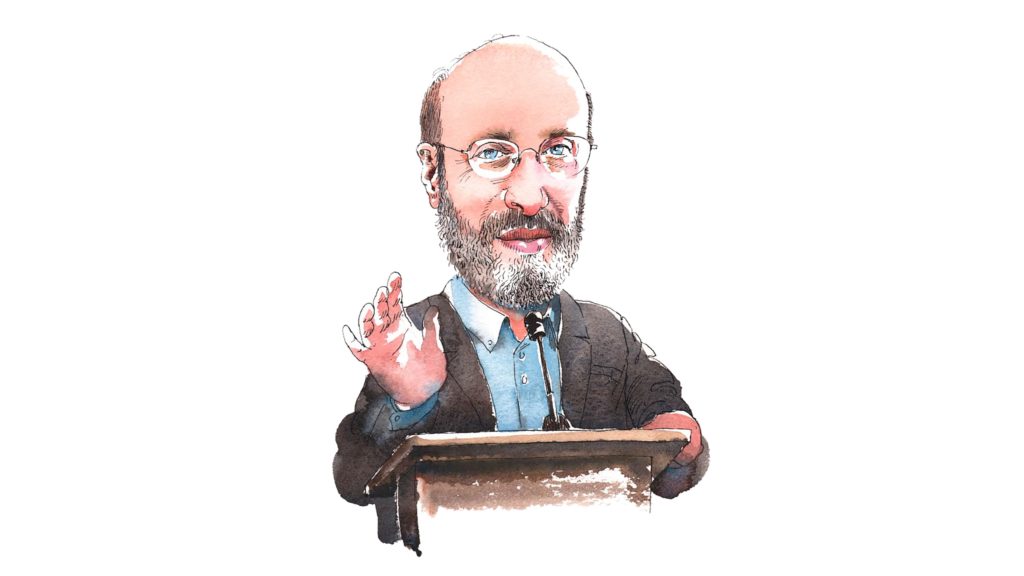
“The Cruiser” and the Jews
O’Brien himself didn’t consider his history of Zionism to be anything more than a bit of haute vulgarization, but it is much more than that. It is one of those uncommon works of political history in which a man who knows how the world works tells a great story with dazzling literary skill.
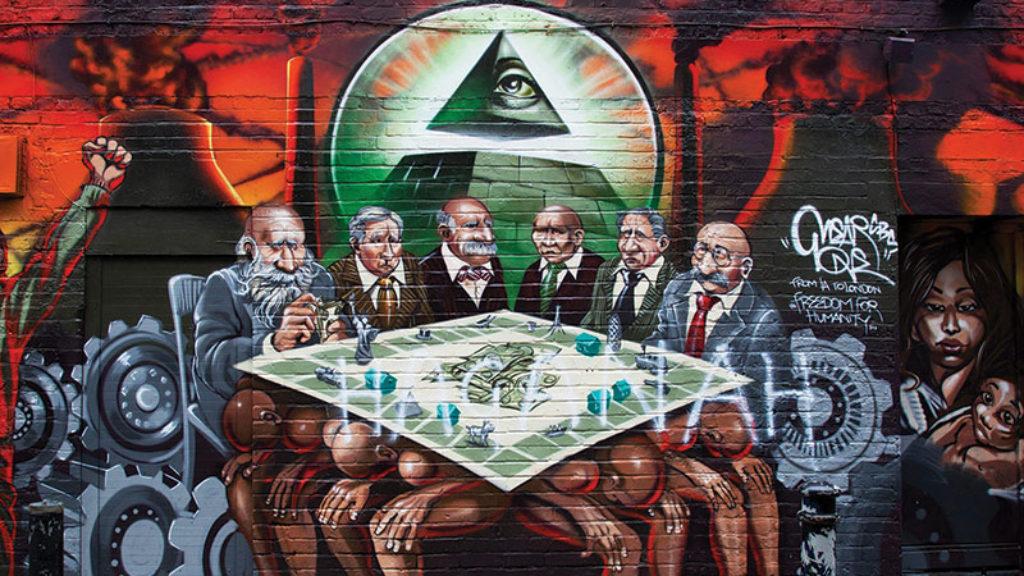
Jews Not without Money
Jews, Money, Myth, at London's Jewish Museum, normalizes the Jewish relationship with money without negating those factors that made this particular historical association especially fraught.
Comments
You must log in to comment Log In